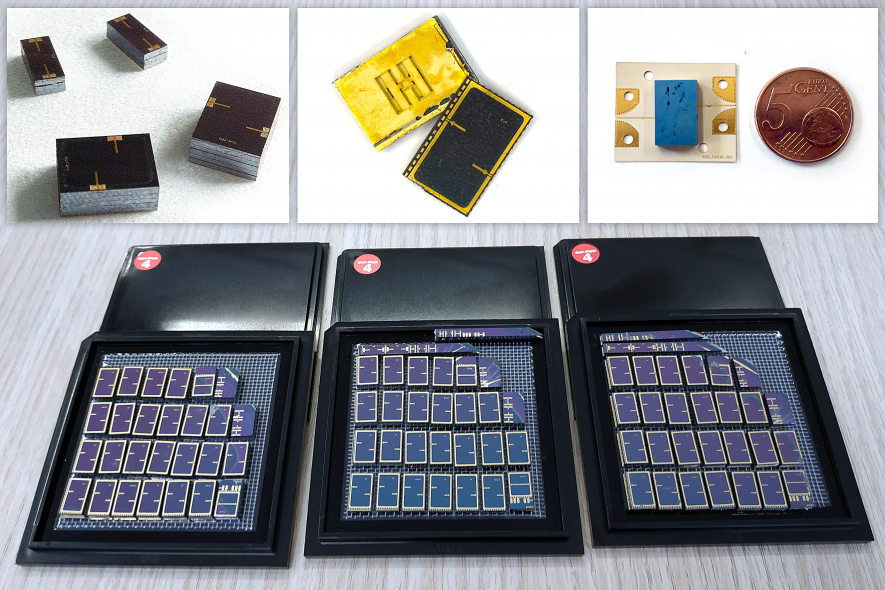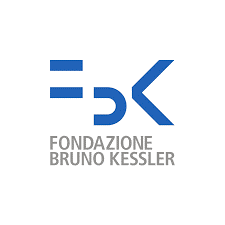-
StatusCompleted
-
Status date2019-02-19
-
Activity Code5C.091
The project objective is to investigate the potentialities of the combination of micromachining techniques with multilayer structures for the realization of low-loss, low mass and compact filters in LS and Ka bands. RF Microtech (Perugia, Italy) is the prime contractor and carry out the electro-magnetic design and RF characterization of the filters and their integration on a test board. Fondazione Bruno Kessler, (Trento, Italy) is the partner involved in the mechanical design and fabrication of the prototypes. Elital (L’Aquila, Italy) was involved in the first part of the project to carry out the environmental tests for space compatibility.
The Main challenge of the project is to optimize and fine-tune the micromachining fabrication process as well as the wafer-to-wafer bonding techniques for the realization of very compact filters at low cost.
In terms of RF design, one of the most challenging project requirement is the filter compatibility with Surface Mount Technology. Indeed, at Ka-band, the filter integration into planar board requires accurate modelling in order to avoid performance degradations.
The goal is to obtain a very repeatable and accurate technology platform allowing the realization of power input/output SMT space filters from Ka band up to W band.

Figure 1: Details of manufactuing process: micromachined SOI wafer (left); metallized through silicon vias (centre), completed filter without the top layer (rigth)
The main benefit of the new product are:
- Up to 90% mass and footprint reduction with respect to conventional cavity filters having similar insertion loss.
- Easy integration with PCB and printed circuitry (SMD technology)
- Low cost for high volume manufacturing (batch fabrication)
High design flexibility and scalability to higher frequencies (Q/V, E and W bands)
The developed breadboard consists of Ka 4th order filters made of four cavity resonators stacked on two different levels to reduce the footprint and volume occupation (volume: 9x14x4mm, weight: 0,75g)
Each resonator consists of a λ/2 metal and Si membrane suspended inside a shielding cavity and connected to its walls at both ends. The cavities are realized by using DRIE process and two SOI wafers. Wafer-to-wafer bonding is used to seal and stuck the 6 layers and realize the multilayer structure. The manufactured filter dies show insertion loss below 3dB and Q factor above 500, which can be improved by adopting thicker SOI wafers and thicker electro-plated gold layers.
The devices can be easily integrated in standard PCB by using standard surface mounting techniques (gold pads are provided at input and output)


Figure 2 Final 4th order Ka-band Filer. Photos (a) and measurements (b).
The activity was divided into 3 Phases: Phase 1 is dedicated to the review of the state of the art of both LS and Ka-band multilayer micromachining filters for satellite applications and identification of the most robust design concept. One breadboard type per each frequency band was built and tested.
Phase 2 was dedicated to the design, manufacturing and test in laboratory under environment condition of 4th order Ka-band filters based on BBs results of Phase 1. A test board was design and developed as well to test the surface mounting capability of the device. The attention was focused on Ka band design since the large dimensions of the LS filters make them too expensive to be realized in micromachining technology.
In 2017 the project was extended to Phase 3 with the following objectives:
- Optimize and refine the filter design to better fit with the capability of the technology
- Tune and stabilize the manufacturing process
- Test the assembly at wafer level
Phase 3 is concluded in 2018 with the realization and verification in relevant environment of 4th order Ka band bandpass micro-machined multilayer filters.
The DRIE process for the cavity etch on SOI wafers has been optimized. and fine tuned, providing high control of the final shape of the cavities and improved sidewall finish. The assembly process of the six layers has been developed either at chip and at wafer level in order to reduce minimize the fabrication costs.
In phase 3, more than #150 devices were completed and characterized to demonstrate their space compatibility.

Figure 3: Batch fabrication of multilayer micromachined 4th order filters

Figure 4: Ka band 4th order filters mounted on a test board (SMD)
Starting from a TRL of 2, the final TRL obtained is 4.



